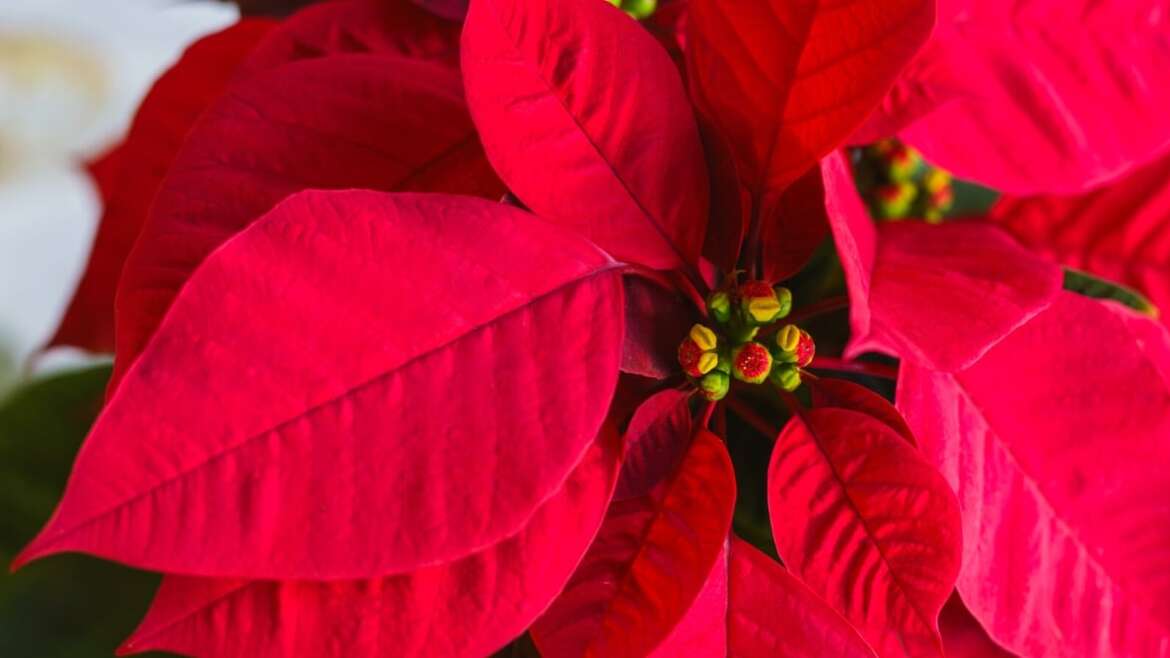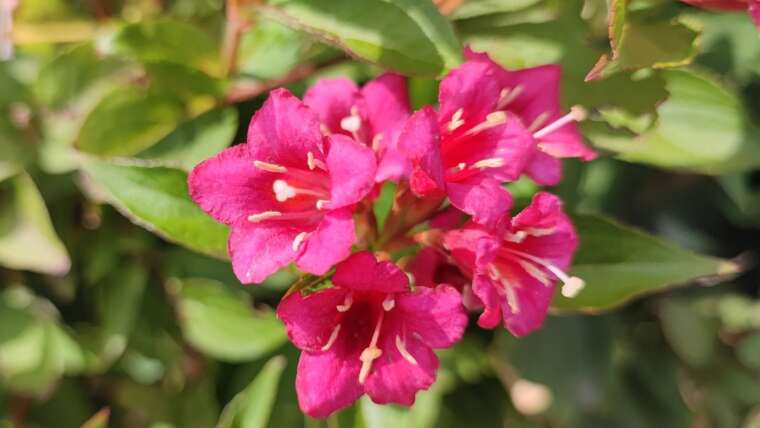Poinsettias are the most popular plant of the holiday season. These tropical perennials native to Central America seem to pop up everywhere you look throughout December, flaunting colorful bracts in shades of pink, red, white, and orange. Bracts are the brightly-colored leaves we commonly mistake for flowers, surrounding the much smaller flowers at the ends of branches.
By now, you’ve probably heard the rumor that these plants are toxic to pets, and while this is not altogether untrue, the reality may be far less grave than you might think. Many plants are listed as toxic to animals, but not all are toxic enough to cause serious alarm. Also, not all pets venture to munch on plants, so having these plants within reach depends on more than one factor.
If you’re reading this because you saw your precious pooch or curious cat snacking on those colorful bracts, take a deep breath and read on. The situation might not be quite so dire after all. Let’s discuss whether or not poinsettias are truly toxic to pets and what might happen if your fur baby decides to take a bite.
The Short Answer
Yes, poinsettias are considered toxic for pets, but not enough to kill your pet or cause lasting damage, even in relatively large amounts. They can, however, cause digestive upset, which can range from mild drooling to vomiting and diarrhea. If you know your pet likes to snack on plants, keep this one out of reach or outside the home.
The Long Answer
There is quite a long list of plants that are toxic to pets. While some of them are highly poisonous and can cause fatal effects like cardiac arrest or neurotoxicity, the effects of all plants considered toxic aren’t all this serious.
Philodendrons make their mouths hurt, and hydrangeas will give them a tummy ache, but these plants are unlikely to cause any real or lasting harm.
So, What is the Deal With Poinsettias?
Poinsettias contain substances with soap-like qualities, causing digestive discomfort if ingested by humans or animals.
Poinsettias contain diterpenoid euphorbol esters and steroids, which have soap-like qualities in their white, milky sap. These substances act similarly to detergents when humans or animals ingest them. They can also cause some skin irritation in certain people. In other words, they have the same effect on the digestive tract as a mouthful of soap.
The effects of poinsettia ingestion are similar to what would occur if animals ingested common household soaps. Research shows that eating as much as 1.25 lbs. of poinsettia foliage has no dangerous effects. Instead, the most common effects are nausea, vomiting, and rarely diarrhea or skin rash, which occur when a pet or human consumes large amounts of the plant.
These are unpleasant things to experience, but the popular notion that these plants are highly toxic to pets is untrue. There is one exception regarding serious complications after ingesting these plants, but it applies more to humans. For those with a severe latex allergy, ingesting or even touching the sap from a plant in this family can cause anaphylaxis.
Other species of Euphorbia are more toxic than poinsettias, but none are on the same risk level as oleander or hemlock. The sap from a Euphorbia plant may cause skin irritation, and it can cause harm if you get it in your eyes, but it won’t kill your pet. It will just make them uncomfortable.
Do Pets Know to Avoid It?
 For pets, particularly those allowed outdoors, accessing toxic plants is inevitable. Vigilance is key.
For pets, particularly those allowed outdoors, accessing toxic plants is inevitable. Vigilance is key.
For any pet that regularly spends time outdoors unattended, toxic plants are likely available for them to eat, regardless of how careful you are about not planting them. Cats that spend time outdoors, in particular, can roam into other people’s yards, so it can be difficult to control what they have available.
I had a cat in college that ate just about every flower and plant I brought into my house. A bouquet of roses on my kitchen table, nibble marks on every flower. She chewed the maidenhair fern on my computer desk down to sticks. That cat lived for 17 years, so I assume she simply knew which plants were okay to eat and which ones to steer clear of.
Many animals just seem to know when they aren’t supposed to eat something, either by smell or perhaps by some intuitive sense.
You know your pet and whether they tend to be indiscriminate in their snacking. I’d keep the poinsettias out of reach if you have a young puppy. But, even if your pet takes a bite unexpectedly, all they are likely to experience is some stomach upset. Easter lilies are an entirely different story, but that’s for another time. Suffice it to say you should keep them from the reach of any pet toying with being a vegetarian.
Final Thoughts
Poinsettias are beautiful and cheerful plants to enjoy during the cold winter, but they can cause some unpleasant effects in animals that ingest moderate amounts of them. If you are concerned about your pet tasting your seasonal flowering plants, consider the Christmas Cactus instead. This beautiful holiday plant is non-toxic for pets and people.




